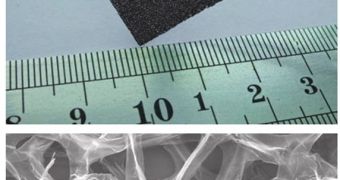Scientists based at the Rensselaer Polytechnic Institute (RPI) say that a new generation of gas sensors could put existing devices to shame. They add that the key to improving performances to such an extent is the use of the bi-dimensional carbon compound graphene.
Discovered only in 2005, the material already brought its discoverers the Nobel Prize in Physics, and has demonstrated itself to be a potential replacement for silicon in underlying circuits, transistors, diodes and processors in all types of electronic devices.
But researchers are now figuring out that they are barely scratching the surface of what this material can actually do. The secret of graphene lies in that fact that it has a perfectly-hexagonal atomic arrangement, which gives it amazing physical and chemical properties.
It is widely accepted today that graphene is the strongest, toughest material ever created. With a little bit of tinkering, it can be outfitted with band gaps, which are essential for applications in the field of electronics. Now, it would also seem that it could make for a very sensitive detector.
RPI investigators were able to create a series of sensors that proved to be many times more effective at detecting potentially dangerous and explosive chemicals than anything on the market today. This could be of extreme interest to law enforcement and national security agencies and organizations.
The tests experts set up were focused on determining whether the graphene-based sensors were able to detect trace amounts of ammonia (NH3) and nitrogen dioxide (NO2) in a sample. The two chemicals were present in tiny concentrations, around 20 parts-per-million (ppm).
The sensor itself is not made of an individual sheet of graphene, but rather from a bunch of layers laid on top of each other. This ensemble created a foam-like structure, which was about the size of a postage stamp. It represents one of the extremely few nanostructure-based gas detector to prove its worth.
Detail of the study appear in a paper called “High Sensitivity Gas Detection Using a Macroscopic Three-Dimensional Graphene Foam Network,” published in the November 23 issue of the esteemed journal Nature Scientific Reports.
“We are very excited about this new discovery, which we think could lead to new commercial gas sensors. So far, the sensors have shown to be significantly more sensitive at detecting ammonia and nitrogen dioxide at room temperature than the commercial gas detectors on the market today,” Nikhil Koratkar says.
The expert, an RPI engineering professor, was the co-leader of the research effort, together with colleague Hui-Ming Cheng, a professor with the Shenyang National Laboratory for Materials Science at the Chinese Academy of Sciences.

 14 DAY TRIAL //
14 DAY TRIAL //